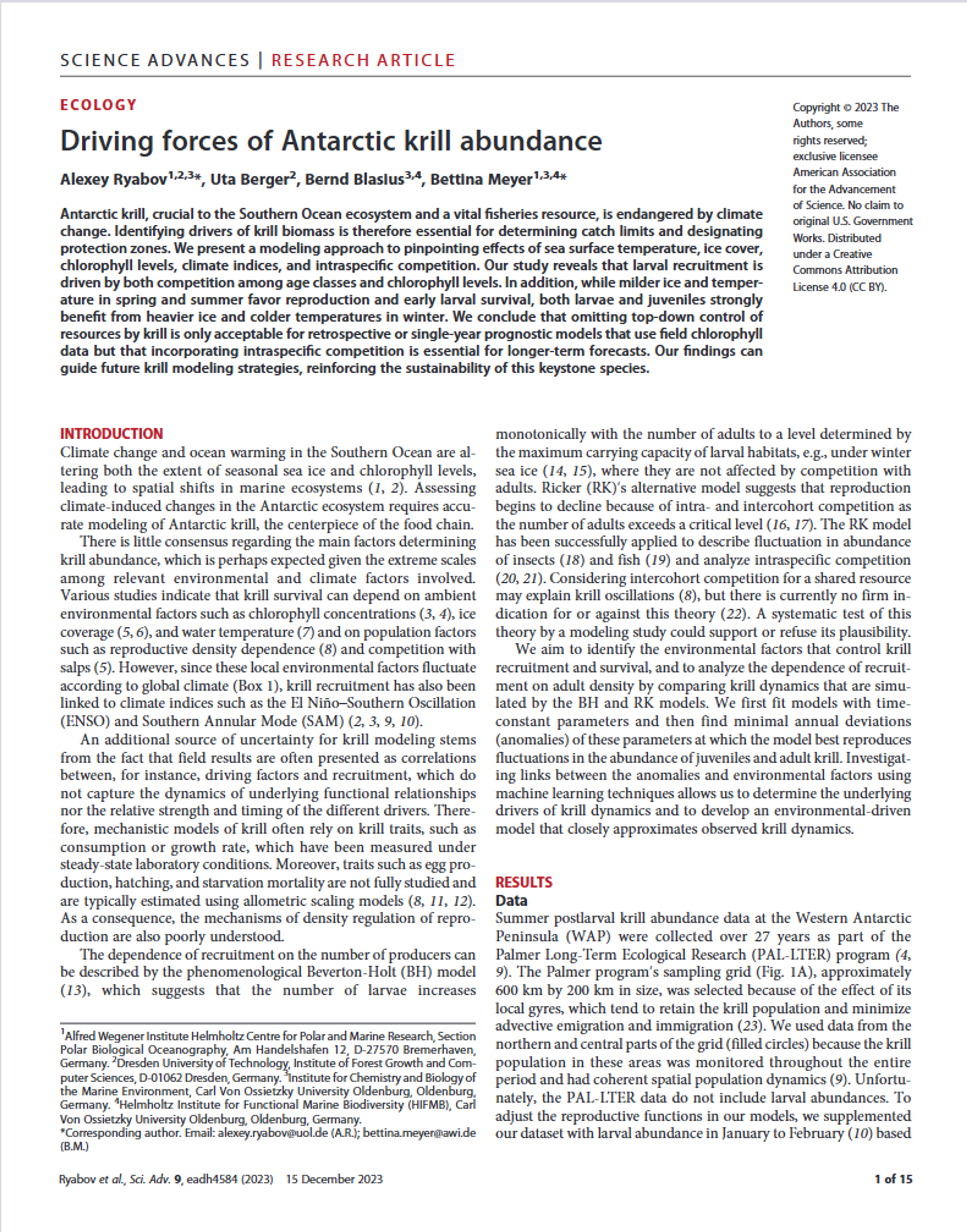Biomass
Fisheries management
Antarctic ecosystem
Climate
Krill (Euphausia superba)
Driving forces of Antarctic krill abundance
Summary
The study developed a comprehensive modeling approach using 27 years of Palmer Long-Term Ecological Research data to identify key environmental drivers of Antarctic krill population dynamics. The research revealed that krill recruitment is controlled by complex interactions between chlorophyll concentrations, sea surface temperature, ice coverage, climate indices (SAM, ENSO), and critically, intraspecific competition between different age classes. The study found evidence of niche separation between larval and juvenile krill, where environmental conditions favoring one life stage may negatively impact another. The research supports that intercohort competition for shared resources drives krill population cycles and emphasizes the importance of including this competition in longer-term forecasting models.
Key Findings
1
Larval recruitment driven by both competition among age classes and chlorophyll levels 2
Milder ice and temperature conditions in spring/summer favor reproduction and early larval survival 3
Heavier ice and colder temperatures in winter benefit both larvae and juveniles 4
Evidence of niche partitioning between larvae and juveniles - factors favoring one stage may harm the other 5
Intraspecific competition essential for longer-term forecasts but not necessary for single-year models using field data 6
Climate indices (SAM, ENSO) have opposing correlations with larval vs. juvenile survival 7
Top-down control of phytoplankton resources by krill populations confirmed 

